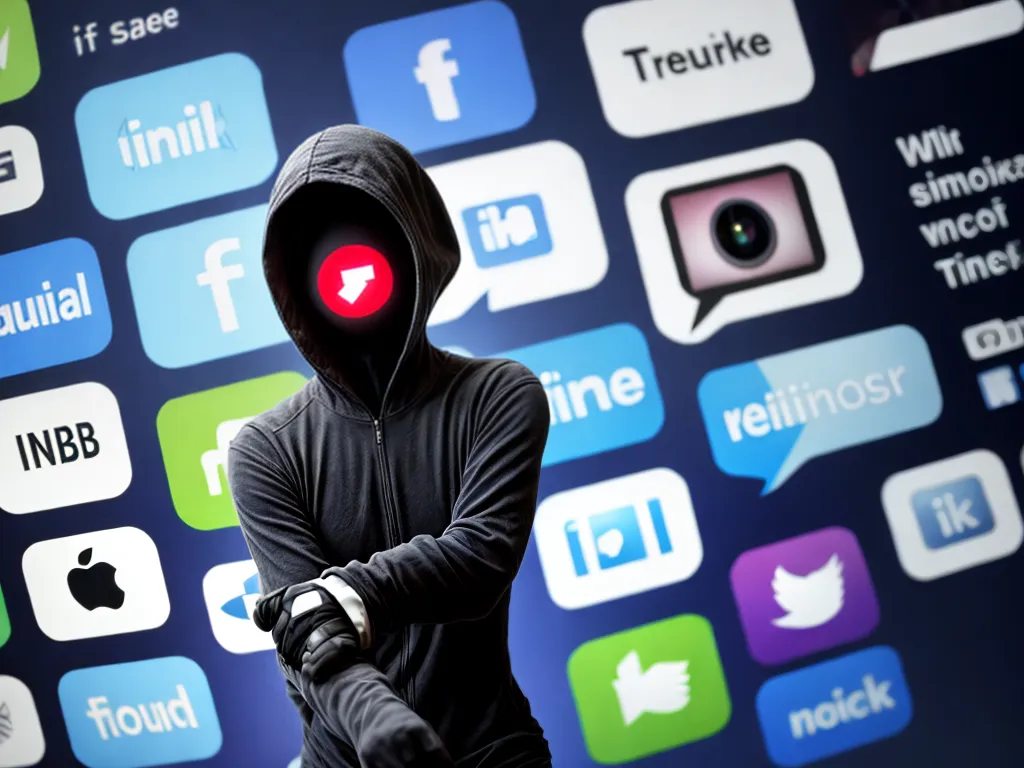
Social media platforms have become a popular attack vector for cybercriminals looking to spread malware. One concerning trend that has emerged is hackers hiding malware inside image files, which are then shared on social platforms to infect unsuspecting users’ devices. As image files are commonly shared on sites like Facebook, Twitter and Instagram, this provides an easy way for hackers to distribute malware at scale.
How Hackers Hide Malware in Images
Hackers employ various techniques to conceal malware inside image files:
Steganography
Steganography is the practice of hiding secret information inside files, including images. The malware code is embedded directly into the image through subtle modifications to the pixel data. This is not visible to the human eye, so the image looks normal. When the image is viewed or downloaded, the malware executes on the victim’s device.
Encoding Malware in Metadata
Images contain metadata – data that describes and gives information about the image file itself. Hackers can insert malware code into the metadata section of images. This metadata is then parsed and run when the image is opened on a device.
Hiding Malware in Comments
Some image formats like BMP allow hackers to include comments sections. Malware code can be placed here and executed when the image is rendered.
Employing Steganography Tools
Hackers use tools like Stegify, Invisible Secrets and Masker to automate hiding malware in image steganography. This makes it easy to generate a huge number of infected image files rapidly.
Spreading Image Malware via Social Media
Once malware-infected image files have been created, hackers distribute them via social media using various tactics:
Posting in Social Groups
Hackers join social media groups and forums based on common interests like photography, sports or entertainment. They then post the malicious image files, often falsely claiming they are something interesting or useful to encourage downloads.
Creating Fake Profiles
Fake profiles are created on social platforms to distribute the infected images. These profiles seem like normal users sharing images with friends. But their only purpose is to spread the malware quickly.
Buying Ads
Paid ads on social platforms like Facebook and Instagram can be purchased to distribute infected images. Hackers take advantage of the large reach ads provide to get their malware out to massive audiences.
Commenting on Influencers’ Posts
Accounts with large followings and high engagement are targeted. Hackers post comments with infected images on these influencers’ posts so that their audiences download the malware.
Leveraging Bots
Bots are automated social media accounts controlled by software. Hackers deploy armies of bots that share the malicious images across social platforms at scale. This allows them to infect thousands of users rapidly.
Dangers of Image Malware on Social Media
The prevalence of image malware on social platforms presents significant dangers to regular users:
Malware Infection
Once downloaded, the malware allows hackers to infect users’ devices. This can result in data breaches, identity theft or devices becoming part of a botnet.
Spreading Ransomware
Ransomware payloads can be delivered through infected images. This encrypts files on a victim’s device until a ransom is paid.
Mining Cryptocurrency
infected images may contain miners that secretly use a victim’s computing power to mine cryptocurrency like Bitcoin for hackers.
Distribution of Further Malware
Initial malware downloads can install further malicious software including trojans, spyware and viruses. This gives hackers deeper control of compromised systems.
Phishing Attacks
Phishing attempts can be enabled by social media image malware. This tricks users into surrendering account credentials or sensitive information to hackers.
Protecting Yourself from Image Malware on Social Media
Here are some tips to avoid becoming a victim of image malware campaigns on social platforms:
-
Be wary of images shared from unknown accounts or containing dubious claims. These have a higher risk of being infected.
-
When downloading images, check file extensions carefully. Unusual extensions like .exe or .scr may indicate malware.
-
Never open or render an image file unless you fully trust the source it came from.
-
Install a reputable cybersecurity software suite with anti-malware capabilities on your devices.
-
Keep social media account privacy settings high and avoid accepting follow requests from unknown accounts.
-
Enable two-factor authentication on your important online accounts for an extra layer of security.
-
Think carefully before clicking on links or files advertised on social media ads or sponsored posts.
-
Report any suspicious accounts distributing strange images to social media platforms.
Malware purposely hidden in image files and distributed via social media presents an insidious threat. Being alert and proactive regarding security practices will help users avoid infection. With hackers constantly innovating their techniques, it is crucial to remain vigilant when interacting with images and files on social platforms. Exercising caution before rendering or downloading any images will go a long way toward preventing infection.












